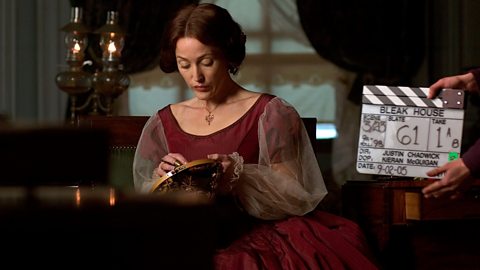Social, cultural and historical considerations
The period in which your play is set will have a big influence on your character development. Itās important to consider any social, historical and cultural factors which will affect your characterisation. You could create a research board made of magazine cuttings, fabrics, costume images, photos and sketches to help you.
A young lady in VictorianPeriod of British history defined by the reign of Queen Victoria from 1837-1901. times would have moved differently to a young woman today. Today, a teenager might slouch, sprawl or sit cross-legged. In the Victorian era, she would have been expected to behave in a lady-like fashion and to sit elegantly with her legs crossed demurelyAn affectation to give the appearance of calm. at the ankles. Her posture would have been more upright and gestures more contained. The behaviour expected from women was different then. Her speech would be different too, with no slang and the correct use of grammar.
If your character is from a different era, make sure that you research it carefully so the character that you create is believable for the time.

Where your character is from and their culture will also affect your characterisation. Firstly they may have an accent different to your own, which you will have to practise. Secondly, in different countries some gestures mean conflicting things. For instance, making an OK sign with finger and thumb is considered an obscene gesture in Greece and Turkey. In the UK a nod of the head up and down means āyesā, and shaking it from side to side means ānoā. But in parts of India, some Middle Eastern countries and in Greece the opposite is true! Itās not just these cultural differences. There are also fundamental differences in beliefs and attitudes which you would have to represent fairly.
Authenticity and giving a true performance are vital when creating a character. Remember the dramatist Jean Genetās famous quote: It's a true image, born of a false spectacle.